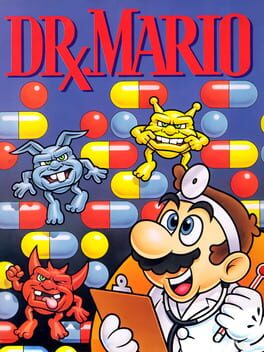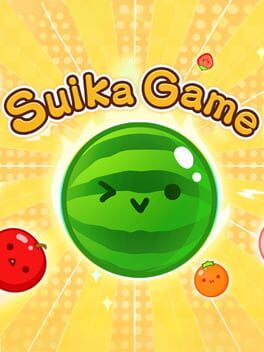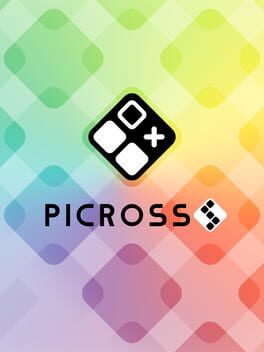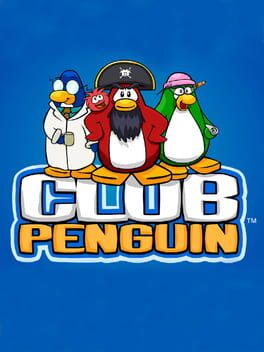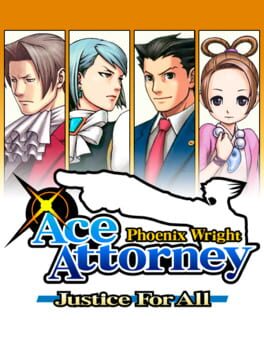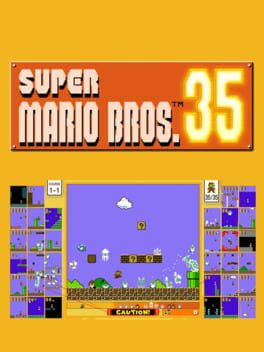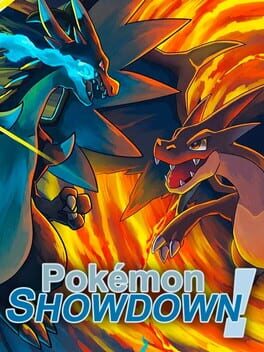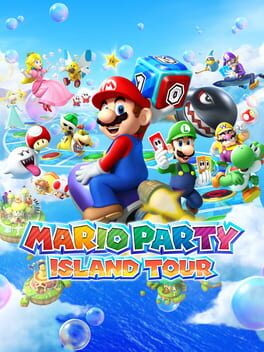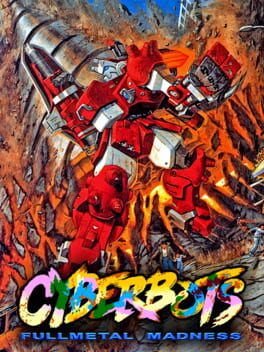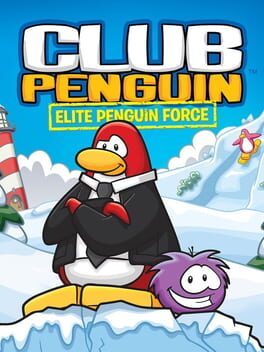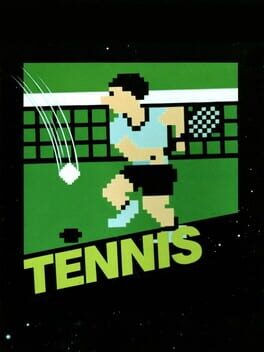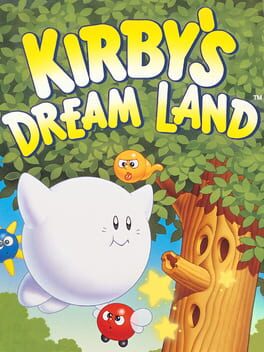1990
idk why everyone keeps asking if I’m red-pilled or blue-pilled when yellow is clearly the superior of the three smh
-----------------
Dr Mario is a strange little game in the grand scheme of the Mario series; it’s both one of the first proper Mario spinoff series and a franchise that’s practically instantly recognisable to those in the general gaming space….while also being a game you rarely see people actually discuss outside of the occasional ‘yep that’s a Dr Mario game alright’ when you bring it up. However, after playing through some of the games on NSO again, I’ve gotten in the mood to chat about the one that started it all for a bit. So put on your lab coat and grab your (definitely legally obtained) PhD as we take a visit to the clinic of Mr. Mario himself.
The general conceit of Dr Mario is a decidedly simple one: you’re given a randomised layout of coloured viruses (red, blue and yellow) which you have to match with the colour of one of your pills. Match four of the same colour together and you clear a row; clear all the viruses and you beat the stage. It’s the same tried-and-true gameplay loop of many puzzle games from the 80’s/90’s (think Tetris, Puyo Puyo, etc.), albeit with a bit more of random element as the pills generated can be either entirely one colour or half one colour, half another. In much the same way the text on a doctor’s clipboard reads like complete gobbledygook on first inspection, the gameplay of DM sounds a hell of a lot more complicated than it actually is as, when you’re actually playing it, you start to fall into that classic sense of focused zen that competitive-minded puzzle games from this era manage to achieve so well. This is helped doubly by the excellent music which accompanies the action; from the infectiously catchy melody of Fever to the tense yet relaxed vibe of Chill, it does a great job at pushing you to hone your skills as the pills pile up in front of you.
Now while all this certainly sets DM apart from the crowd (even to this day), it does come with an unfortunate side effect that its contemporaries managed to evade: downtime. A frustratingly common occurrence in DM are situations where you’ll be down to about 1-2 viruses remaining where you just need one more colour to finish the stage off….only for the RNG to give you every colour but the one you need, resulting in you having to awkwardly push it to the side of the board and wasting far more time than is necessary. Dr Mario is also much more punishing than Tetris or Puyo Puyo in terms of making mistakes; while you can reasonably recover from a misplaced piece drop in the latter examples, an accidental colour placement in DM can pretty much doom a run from the moment it happens unless you’re REALLY deep into a stage, an issue that gets exacerbated to an obscene degree in some of the last stages where the viruses can spawn on the screen as high as the game will allow. The save states/rewind present in the modern VC/NSO releases can mitigate this issue somewhat but it’s still a massive pain regardless.
For a final diagnosis, Dr Mario is very much like real-life medicine: it can be exactly what you need if you’re feeling under the weather, but too much of it in a short time frame can just as easily make you feel even worse. Overall then, I’d prescribe a small dosage of the NES original every now and then for when you’re ‘sick’ of other puzzle games and want something just a little bit different.
-----------------
Dr Mario is a strange little game in the grand scheme of the Mario series; it’s both one of the first proper Mario spinoff series and a franchise that’s practically instantly recognisable to those in the general gaming space….while also being a game you rarely see people actually discuss outside of the occasional ‘yep that’s a Dr Mario game alright’ when you bring it up. However, after playing through some of the games on NSO again, I’ve gotten in the mood to chat about the one that started it all for a bit. So put on your lab coat and grab your (definitely legally obtained) PhD as we take a visit to the clinic of Mr. Mario himself.
The general conceit of Dr Mario is a decidedly simple one: you’re given a randomised layout of coloured viruses (red, blue and yellow) which you have to match with the colour of one of your pills. Match four of the same colour together and you clear a row; clear all the viruses and you beat the stage. It’s the same tried-and-true gameplay loop of many puzzle games from the 80’s/90’s (think Tetris, Puyo Puyo, etc.), albeit with a bit more of random element as the pills generated can be either entirely one colour or half one colour, half another. In much the same way the text on a doctor’s clipboard reads like complete gobbledygook on first inspection, the gameplay of DM sounds a hell of a lot more complicated than it actually is as, when you’re actually playing it, you start to fall into that classic sense of focused zen that competitive-minded puzzle games from this era manage to achieve so well. This is helped doubly by the excellent music which accompanies the action; from the infectiously catchy melody of Fever to the tense yet relaxed vibe of Chill, it does a great job at pushing you to hone your skills as the pills pile up in front of you.
Now while all this certainly sets DM apart from the crowd (even to this day), it does come with an unfortunate side effect that its contemporaries managed to evade: downtime. A frustratingly common occurrence in DM are situations where you’ll be down to about 1-2 viruses remaining where you just need one more colour to finish the stage off….only for the RNG to give you every colour but the one you need, resulting in you having to awkwardly push it to the side of the board and wasting far more time than is necessary. Dr Mario is also much more punishing than Tetris or Puyo Puyo in terms of making mistakes; while you can reasonably recover from a misplaced piece drop in the latter examples, an accidental colour placement in DM can pretty much doom a run from the moment it happens unless you’re REALLY deep into a stage, an issue that gets exacerbated to an obscene degree in some of the last stages where the viruses can spawn on the screen as high as the game will allow. The save states/rewind present in the modern VC/NSO releases can mitigate this issue somewhat but it’s still a massive pain regardless.
For a final diagnosis, Dr Mario is very much like real-life medicine: it can be exactly what you need if you’re feeling under the weather, but too much of it in a short time frame can just as easily make you feel even worse. Overall then, I’d prescribe a small dosage of the NES original every now and then for when you’re ‘sick’ of other puzzle games and want something just a little bit different.
2021
2017
2005
2024
Widely considered to be the black sheep of the original Ace Attorney Trilogy, to say Justice for All is a divisive entry among AA fans would be an understatement. And, while I certainly agree that it’s the weakest out of the original trilogy, I’d still consider it an absolutely delightful romp that not only introduces a ton of memorable characters and a brand new core mechanic, but one that tells a damn compelling series of vignettes, with one in particular sticking with you long after the credits roll. But alas, I’m getting ahead of myself; it’s time to re-enter the courtroom once more and see what it is that makes JFA so damn weird. Oh and uhh…. no whips please? Thank you very much.
(WARNING: this review contains minor/vague spoilers for each of the 4 cases featured in Justice for All)
In a shift from my review of the first game, where I essentially explained what an Attorney of the Ace variety even was, I’m mainly going to be discussing what new things JFA brings to the table (since, being completely honest as someone who adores this series, if you’ve played one entry, you’ve basically played them all). In this sense, JFA is probably the biggest trend setter of the series, establishing mechanics/additions that would go on to be utilised in pretty much every single game going forward. One of the most significant new toys added to the series in JFA would have to be the Psyche-Locks: given to you just before the midpoint of the 2nd Case, this glowing magatama allows you peer into the souls of any witness who’s being particularly defensive about a given subject, functioning essentially as the Cross Examination parts of Trials but this time during the Investigation segments and only focusing on presenting the correct evidence. It’s not the deepest mechanic in the world, but it adds a nice layer of tension to Investigations that the first game lacked, connecting the two styles of gameplay together a lot more cohesively. Psyche-Locks or a variation of their general gameplay formula would stick around in every AA game after this and I’d say it was definitely for the best.
After that would be the general trends JFA would lay the groundwork for for each subsequent game in the series (there’s a lot it sets up here so buckle up). Starting off the list would be the tradition of a new composer being brought on to work for each entry (most of the time anyway), giving each new game its own musical style. In JFA’s case, Naoto Tanaka took over the reins from Masakazu Sugimori this time round, delivering some absolutely excellent new tracks throughout (particularly with his Investigation and character themes which I still hold as some of the best in the series). Next would be in how it’s structured: JFA, the original Ace Attorney and almost every game after these two follow a very similar structure: Case 1 is very much a dressed up tutorial, getting you to grips with the game’s mechanics as it throws some generally pedestrian challenges your way, Case 2 is a mix of tutorial-ness (usually through it’s introduction of Investigation segments) along with setting up the main characters/story elements that will persist throughout the entire game (or even multiple games), Case 3 is usually tied to a unique location (e.g. JFA’s is a circus) that has a few moments that tie back to the overarching narrative but mainly exists as a filler case for the devs to flex their creative muscles on what they can come up with (to….let’s just say varying degrees of success) and Case 4/5 being where shit hits the fan and a ton of loose ends and tiny things set up in previous cases all culminate in an epic climax. Not every game follows this structure (The Great Ace Attorney is a particular deviant of this) but it’s one that JFA cemented as what would be the standard going forward. Finally, and undoubtedly the biggest, would be the concept of having Phoenix (/Apollo/Athena/Ryuunosuke, take your pick really) face off against a different prosecutor each game. And who is the one to kickstart this trend you ask? None other than the offspring of the demon known as Manfred von Karma, Franziska von Karma. Franziska as a character is certainly an interesting one and, while I wouldn’t call her as multi-faceted as her predecessor Edgeworth and a certain caffeine junkie that we’ll get to in due time, she still manages to be a fascinating study of the effects of succession on the mind and how someone acts when presented with the prospect of living up to the legacy of someone revered (or in this case feared) throughout the nation. Like I said, she isn’t the deepest character compared to many of the other prosecutors seen throughout the series, but she does a great job of chastising the player and being the centrepiece of some genuinely fantastic emotional moments (the post credits scene is particularly heartwrenching). Just...don't let me near her whip, OK?
In terms of JFA’s overall case quality, I’d say it’s pretty hit or miss. The tutorial case is pretty fun (with a delightfully hammy villain at the centre of it), the 2nd is pretty dull in my opinion, with not much of note happening past the first Investigation segment (it did introduce Pearls though so that’s definitely a positive) and Case 3, while maligned by the general AA fandom as the worst in the series, was one I found to be immensely enjoyable to go through (extremely weird and uncomfortable love triangle notwithstanding) with it’s sheer absurdity and genuinely heartbreaking villain.
And then there’s Case 4: Farewell My Turnabout.
AAAAAAAAAAAAAAAAAAAAAAAAAAAAAAAAAAAAAAAAAH
Farewell My Turnabout is widely considered to be one of, if not THE best case in the entire series and for damn good reason; it sets up a highly unique scenario that hasn’t really been done in any other AA games since, is filled with tons of both new and returning faces (each with their own absolutely fascinating and deeply compelling quirks and backstories) and is fueled by one of the greatest moments in Ace Attorney history that’ll leave you reeling long after the credits roll. It’s hard to really say much about this case without giving away what makes it so damn enjoyable (as evident by how vague I’m being with the details here) but just know that it makes sitting through JFA’s admittedly wishy-washy quality so worth it in the end. All in all, it’s a fascinating crop of cases that serves to tee up stuff to come in T&T while also making for an (at the very least) extremely engaging journey throughout many different locales, helping you to slowly piece together the overall narrative as they progress before climaxing in one of the most unforgettable finales in the series.
In a way, JFA’s choice of prosecutor and what they represent feels almost emblematic of the entire game to me: a sequel that couldn’t possibly hope to match the lasting legacy of their predecessor, fumbles when it tries too hard to recapture what worked in the past before ultimately soaring to new, near insurmountable heights once it decides to carve its own path, untethered by the expectations brought about from what came before. It’s this enrapturing level of perfect imperfection that lets JFA, despite of all of it's shortcomings, sit proudly alongside it’s more generally respected siblings in my eyes. Until we meet again....Mr. Phoenix Wright.
(WARNING: this review contains minor/vague spoilers for each of the 4 cases featured in Justice for All)
In a shift from my review of the first game, where I essentially explained what an Attorney of the Ace variety even was, I’m mainly going to be discussing what new things JFA brings to the table (since, being completely honest as someone who adores this series, if you’ve played one entry, you’ve basically played them all). In this sense, JFA is probably the biggest trend setter of the series, establishing mechanics/additions that would go on to be utilised in pretty much every single game going forward. One of the most significant new toys added to the series in JFA would have to be the Psyche-Locks: given to you just before the midpoint of the 2nd Case, this glowing magatama allows you peer into the souls of any witness who’s being particularly defensive about a given subject, functioning essentially as the Cross Examination parts of Trials but this time during the Investigation segments and only focusing on presenting the correct evidence. It’s not the deepest mechanic in the world, but it adds a nice layer of tension to Investigations that the first game lacked, connecting the two styles of gameplay together a lot more cohesively. Psyche-Locks or a variation of their general gameplay formula would stick around in every AA game after this and I’d say it was definitely for the best.
After that would be the general trends JFA would lay the groundwork for for each subsequent game in the series (there’s a lot it sets up here so buckle up). Starting off the list would be the tradition of a new composer being brought on to work for each entry (most of the time anyway), giving each new game its own musical style. In JFA’s case, Naoto Tanaka took over the reins from Masakazu Sugimori this time round, delivering some absolutely excellent new tracks throughout (particularly with his Investigation and character themes which I still hold as some of the best in the series). Next would be in how it’s structured: JFA, the original Ace Attorney and almost every game after these two follow a very similar structure: Case 1 is very much a dressed up tutorial, getting you to grips with the game’s mechanics as it throws some generally pedestrian challenges your way, Case 2 is a mix of tutorial-ness (usually through it’s introduction of Investigation segments) along with setting up the main characters/story elements that will persist throughout the entire game (or even multiple games), Case 3 is usually tied to a unique location (e.g. JFA’s is a circus) that has a few moments that tie back to the overarching narrative but mainly exists as a filler case for the devs to flex their creative muscles on what they can come up with (to….let’s just say varying degrees of success) and Case 4/5 being where shit hits the fan and a ton of loose ends and tiny things set up in previous cases all culminate in an epic climax. Not every game follows this structure (The Great Ace Attorney is a particular deviant of this) but it’s one that JFA cemented as what would be the standard going forward. Finally, and undoubtedly the biggest, would be the concept of having Phoenix (/Apollo/Athena/Ryuunosuke, take your pick really) face off against a different prosecutor each game. And who is the one to kickstart this trend you ask? None other than the offspring of the demon known as Manfred von Karma, Franziska von Karma. Franziska as a character is certainly an interesting one and, while I wouldn’t call her as multi-faceted as her predecessor Edgeworth and a certain caffeine junkie that we’ll get to in due time, she still manages to be a fascinating study of the effects of succession on the mind and how someone acts when presented with the prospect of living up to the legacy of someone revered (or in this case feared) throughout the nation. Like I said, she isn’t the deepest character compared to many of the other prosecutors seen throughout the series, but she does a great job of chastising the player and being the centrepiece of some genuinely fantastic emotional moments (the post credits scene is particularly heartwrenching). Just...don't let me near her whip, OK?
In terms of JFA’s overall case quality, I’d say it’s pretty hit or miss. The tutorial case is pretty fun (with a delightfully hammy villain at the centre of it), the 2nd is pretty dull in my opinion, with not much of note happening past the first Investigation segment (it did introduce Pearls though so that’s definitely a positive) and Case 3, while maligned by the general AA fandom as the worst in the series, was one I found to be immensely enjoyable to go through (extremely weird and uncomfortable love triangle notwithstanding) with it’s sheer absurdity and genuinely heartbreaking villain.
And then there’s Case 4: Farewell My Turnabout.
AAAAAAAAAAAAAAAAAAAAAAAAAAAAAAAAAAAAAAAAAH
Farewell My Turnabout is widely considered to be one of, if not THE best case in the entire series and for damn good reason; it sets up a highly unique scenario that hasn’t really been done in any other AA games since, is filled with tons of both new and returning faces (each with their own absolutely fascinating and deeply compelling quirks and backstories) and is fueled by one of the greatest moments in Ace Attorney history that’ll leave you reeling long after the credits roll. It’s hard to really say much about this case without giving away what makes it so damn enjoyable (as evident by how vague I’m being with the details here) but just know that it makes sitting through JFA’s admittedly wishy-washy quality so worth it in the end. All in all, it’s a fascinating crop of cases that serves to tee up stuff to come in T&T while also making for an (at the very least) extremely engaging journey throughout many different locales, helping you to slowly piece together the overall narrative as they progress before climaxing in one of the most unforgettable finales in the series.
In a way, JFA’s choice of prosecutor and what they represent feels almost emblematic of the entire game to me: a sequel that couldn’t possibly hope to match the lasting legacy of their predecessor, fumbles when it tries too hard to recapture what worked in the past before ultimately soaring to new, near insurmountable heights once it decides to carve its own path, untethered by the expectations brought about from what came before. It’s this enrapturing level of perfect imperfection that lets JFA, despite of all of it's shortcomings, sit proudly alongside it’s more generally respected siblings in my eyes. Until we meet again....Mr. Phoenix Wright.
2020
2011
Maybe it's just nostalgia clouding my memory of this one (it was my very first Mario Party game after all) but I think Island Tour is pretty underrated all things considered. The minigames were a ton of fun and used the system's capabilities in a bunch of cool ways, the boards were really creative concept-wise (execution-wise....eh, not so much) and Bowser Tower was a really good side-mode that kept me coming back over and over again.
Overall, Mario Party Island Tour is pretty much the video game equivalent of a drive-thru meal: hollow when consumed anywhere but on-the-go, but a nice time within that context.
Overall, Mario Party Island Tour is pretty much the video game equivalent of a drive-thru meal: hollow when consumed anywhere but on-the-go, but a nice time within that context.
Cyberbots is a game I want to love so badly; it's got a great concept, excellent character designs, good music and a level of destructive dopamine that I can always get behind. However, it's held back by a simple-to-a-fault control scheme, excessively clunky movement and horrifically difficult AI during the arcade mode run. I may come back to it someday (I've only beat it once using Jin/Brodia) but for right now, Cyberbots remains as an interesting relic of fighting games' past that unfortunately has not aged as gracefully as it's contemporaries from the same time period. Would be down for a proper sequel someday though.
(played through Capcom Fighting Collection on Switch)
(played through Capcom Fighting Collection on Switch)
2015
I love Pokeclicker and also despise it because I played it for the first time right as school was kicking back up again and it absolutely massacred my productivity for a solid month. Haven't touched it since (which is probably for the best), though I'd definitely recommend it if you have the free time allowed for an auto-clicker like this because it's a very fresh and unique spin on the genre purely by incorporating/modifying Pokemon mechanics into an idle game.
Also I only played up until the end of Gen 1 and they've apparently added a ton of other generations/regions since so that's definitely a big plus as well.
Also I only played up until the end of Gen 1 and they've apparently added a ton of other generations/regions since so that's definitely a big plus as well.
Played this one a ton as a kid due to being a massive fan of the source material (I'LL NEVER FORGET YOU CLUB PENGUIN <3) and it was pretty alright. I can't remember if I ever got around to finishing it as a kid but the aesthetic and puzzles were generally decent from what I remember. Probably about a 5 objectively but it gets bumped up to about a 6.5/7 for nostalgia's sake.
Also shoutout to Jetpack Guy; what a trooper.
Also shoutout to Jetpack Guy; what a trooper.
1985
1984
1992
A fascinatingly quaint start to what would eventually become one of the most iconic mascots in gaming history. Even as early as the Game Boy, the series' trademark charm and attention-to-detail is on full display between the world-transition cutscenes, reaction sprites and generally high unique frame counts on character animation (particularly on Dedede; even on a black and white (or puke green) screen, that lad is larger than LIFE). This, coupled with wonderful character/enemy designs and a legitimately fantastic and instantly memorable soundtrack (with special mention going to Green Greens, Mint Breath and Mt. Dedede in particular) and Dream Land certainly leaves a lasting impression on you in the visual and auditory department.
However, for as much as it does well in those areas, Dream Land has got issues APLENTY. Its gameplay, while not bad by any means, is almost mind-numbingly simple compared to literally every other entry in the series for one simple yet ever-so-crucial reason: the complete absence of Copy Abilities. What made the series into its signature infinitely-customisable action platformer identity is strikingly missing in the beginning, leaving DL as a game lacking the punch of later titles, particularly in the boss fights which end up as ‘wait for this attack’ a heck of a lot more than stuff like Super Star or even Adventure. Another aspect which is perhaps more notorious is Dream Land’s exceptionally tiny length, with a full playthrough taking at most half an hour to accomplish. Sure, Extra Mode is certainly a nice first-time completion bonus that extends play-time to a serviceable degree (even if bosses like Kracko make me want to tear my heart out), but having such a short length makes an already repetitive adventure feel even less impactful by the time the credits roll.
Overall, Kirby’s Dream Land is very much a case of style over substance: what’s here is undoubtedly decent and would lay the groundwork for almost every entry going forward. However, between the excessively simple gameplay and nowadays criminal amount of run-time, there’s little to no reason to play this one when dozens of better alternatives have existed for so many years at this point. Still, for Kirby superfans such as myself, it’s definitely a charming novelty to run through every once in a while to see where the pink puffball got his initial start before blossoming into the adorable destroyer of gods we know him as today.
However, for as much as it does well in those areas, Dream Land has got issues APLENTY. Its gameplay, while not bad by any means, is almost mind-numbingly simple compared to literally every other entry in the series for one simple yet ever-so-crucial reason: the complete absence of Copy Abilities. What made the series into its signature infinitely-customisable action platformer identity is strikingly missing in the beginning, leaving DL as a game lacking the punch of later titles, particularly in the boss fights which end up as ‘wait for this attack’ a heck of a lot more than stuff like Super Star or even Adventure. Another aspect which is perhaps more notorious is Dream Land’s exceptionally tiny length, with a full playthrough taking at most half an hour to accomplish. Sure, Extra Mode is certainly a nice first-time completion bonus that extends play-time to a serviceable degree (even if bosses like Kracko make me want to tear my heart out), but having such a short length makes an already repetitive adventure feel even less impactful by the time the credits roll.
Overall, Kirby’s Dream Land is very much a case of style over substance: what’s here is undoubtedly decent and would lay the groundwork for almost every entry going forward. However, between the excessively simple gameplay and nowadays criminal amount of run-time, there’s little to no reason to play this one when dozens of better alternatives have existed for so many years at this point. Still, for Kirby superfans such as myself, it’s definitely a charming novelty to run through every once in a while to see where the pink puffball got his initial start before blossoming into the adorable destroyer of gods we know him as today.
